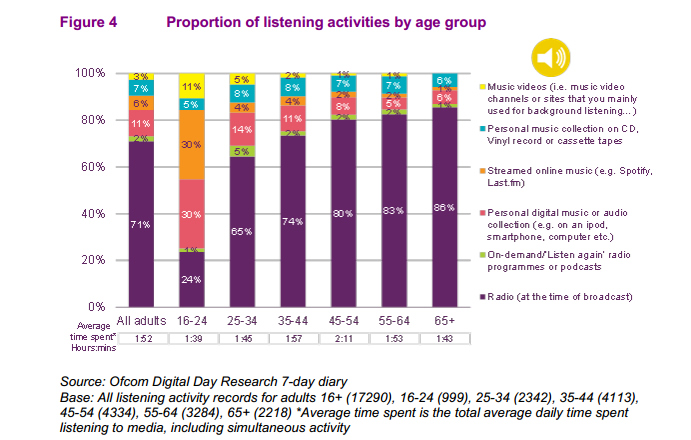The United Kingdom’s broadcast regulator Ofcom is running a consultation about the state of analog radio formats in that country. In the UK radio licensees must file a “character of service” description that defines the kind of content they promise to provide. This includes the music associated with the station. These formats can be described as anything from “Dance” and “Rock” to “Broad Music.” When stations want to change formats, they have to ask Ofcom for approval. The agency wants to know if this system should be modified in some way.
But before launching this proceeding, Ofcom ran a sort of preliminary inquiry, more or less asking whether requiring stations to declare their formats still made sense in the first place. Not surprisingly, some stakeholders called the process “cumbersome,” “unwieldy,” and “bureaucratic.” Ofcom itself acknowledged in its consultation that consumers have many digital alternatives to broadcast radio.
Ofcom still insists, however, that broadcast radio is still different and in many ways more important than Internet radio. The consultation document cites four distinctions.
First, (and most obviously), use of streaming radio requires an Internet connection:
“This may be straightforward in-home, but less so in public places or in-car. Although mobile data coverage is improving, coverage maybe intermittent and not ubiquitous in particular localities.”
Second, Internet radio is often not free:
“There is at least the cost of internet access for the listener: where data usage is capped or charged per unit in a broadband or mobile phone contract, this would be considerable if a level of consumption approaching average broadcast radio consumption hours were switched online.”
Third, much Internet music radio is personalized:
“These services tend to appeal to heavy consumers or purchasers of music in particular genres. The music on broadcast radio is programmed by the broadcaster with the intention of serving the broadest interested audience, who in the majority are light consumers of music.”
Fourth, online radio often requires active involvement:
“Due to the nature of the devices used (personal PCs, tablets and smartphones) and the element of personalised selection, listening to streaming services tends to be an individual experience needing a degree of active involvement of the listener. Broadcast radio is often a shared experience in households, or in public areas or workplaces, and is often considered a secondary media that does not demand active involvement to enjoy.”
Bottom line: Internet radio outlets offer alternative platforms, but not widespread access. “For the foreseeable future internet delivered services may not offer the same universal availability and low cost of access of broadcast radio,” Ofcom says. “They may therefore be complementary, rather than a substitute for, broadcast radio. The role and importance of broadcast radio maintaining broad, popular appeal may even be strengthened as a result.”
The Ofcom UK listening pattern chart posted to the above right is definitely worth a look (click on it for more details). It shows that despite all the new technologies, most British music listeners spend most of their hours listening to broadcast radio.




